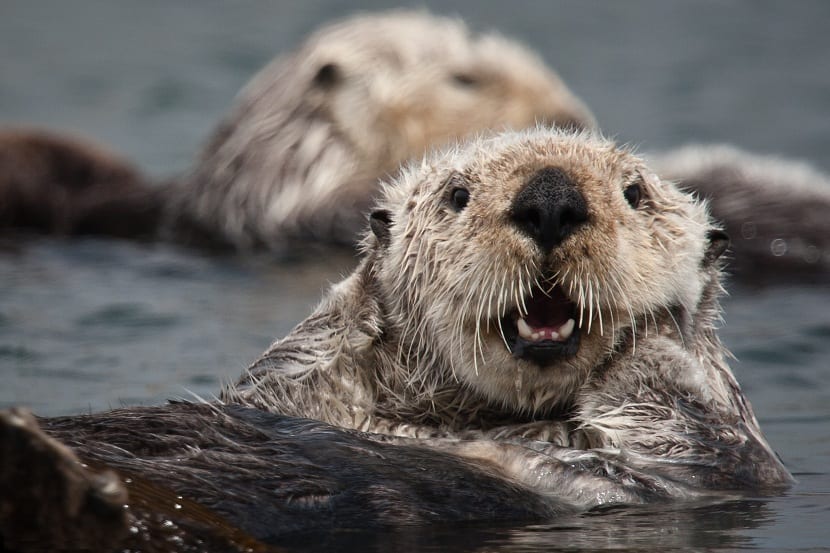
Today we come with a different post than the one we are used to, which is about fish. Let's talk about sea otter. This animal is a mammal whose scientific name is Emhydra lutris and it is quite known all over the world. It belongs to the mustelidae family and lives in the seas. In this post you will be able to know all the characteristics, feeding and reproduction of this animal.
Do you want to learn more about the sea otter? Keep reading.
Key features
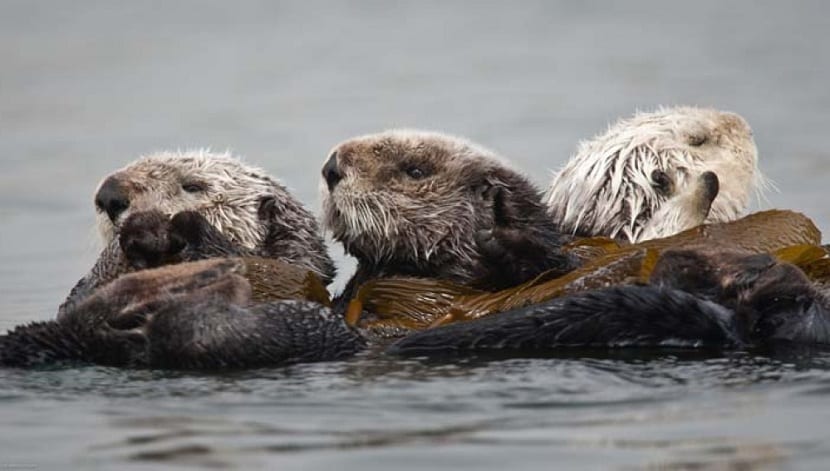
The sea otter is one of the cutest mammals around due to its small size and fur. Their little eyes make them seem that they look with an innocent face that fills all who look at it with adoration. Males are larger than females, although they possess an average length of between 1,2 and 1,5 meters. They usually weigh between 22 and 45 kilograms, although females weigh much less (approximately between 14 and 33 kilograms).
Its skeleton is quite flexible so it can take on really adorable poses. Its legs are flattened to be able to swim well and shaped like a fin. The claws are similar to those of a cat, which facilitates some tasks such as grooming and better capturing its prey. The tail is quite muscular and they basically need it to coordinate the direction with which they are swimming. It also helps them keep their balance well.
Adults have 32 teeth with flattened and rounded molars prepared for grinding rather than cutting. As a special characteristic that helps us, morphologically, to separate the otter from other carnivores is that it only has two lower incisors instead of three.
As for its fur, the skin is not very thick as is the case with other marine mammals. The thick skin serves to cushion the cold of the waters and to be able to regulate the internal temperature well without the external environment interfering too much. Unlike them, the sea otter relies on its fur to protect itself from colder temperatures. And it is that they have more than 150.000 hairs in such a small size that they occupy. They are in the record for the mammal with the most hair.
Special curiosities of the sea otter
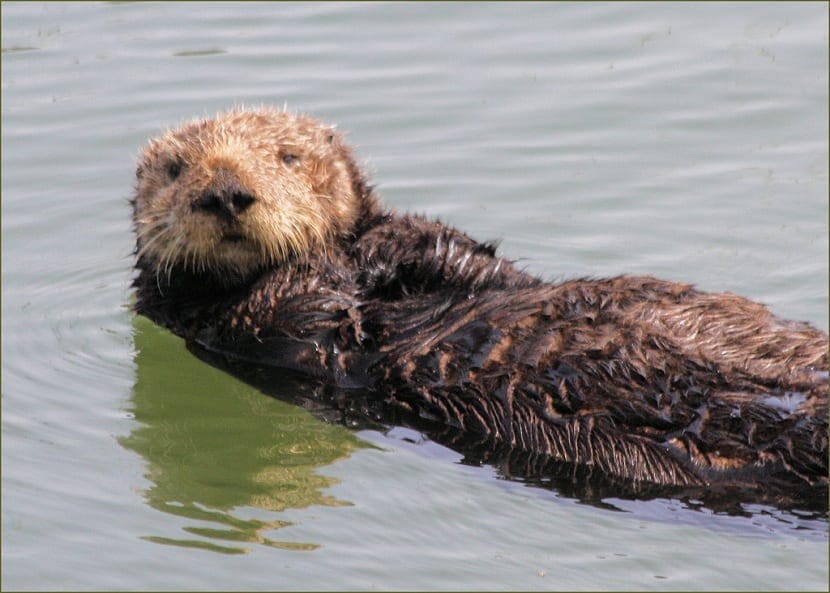
Some characteristics make this animal quite special. Most of these characteristics are evolutionary adaptations related to the improvement of its movement through the waters. The main use is to improve your senses and to be alert to protect yourself from dangers and live with a little more comfort.
Here are some of those features:
- Has the ability to being able to close the nostrils and ear canals into the water to avoid its introduction into your body. In this way, you get rid of some problems related to it.
- The fifth finger of each limb is longer than the rest. This fact has an advantage and a disadvantage depending on the environment where you are. On the one hand, it helps to swim better when in water, but on the other hand, it discourages movement on land and makes it more clumsy.
- The body has great agility and, therefore, can float with extreme ease. Air gets into their fur and makes it less dense. This is how you can float more easily.
- Thanks to the pads on the soles and the extra sensitive whiskers, it is capable of searching for and capturing its prey, even when the water is very shaky or cloudy.
- Scientists have studied these animals numerous times and have concluded that the sense of smell is more important than sight in order to be alert and keep an eye out for potential predators.
Habitat and area of distribution

The area where this species is mainly distributed is in the North Pacific area. It extends from northern Japan to Baja California in Mexico. The main habitat is the areas where the coastal waters are deeper. More specifically about 15 to 20 meters.
On numerous occasions they can be seen swimming near the coast thanks to the presence of areas protected from strong ocean winds. In these areas the sea otter takes the opportunity to relax and not fight against the currents.
Other habitats where we can find them are dense kelp forests, rockier things, and reef barriers. Further north they stop spreading due to the presence of Arctic ice.
Food
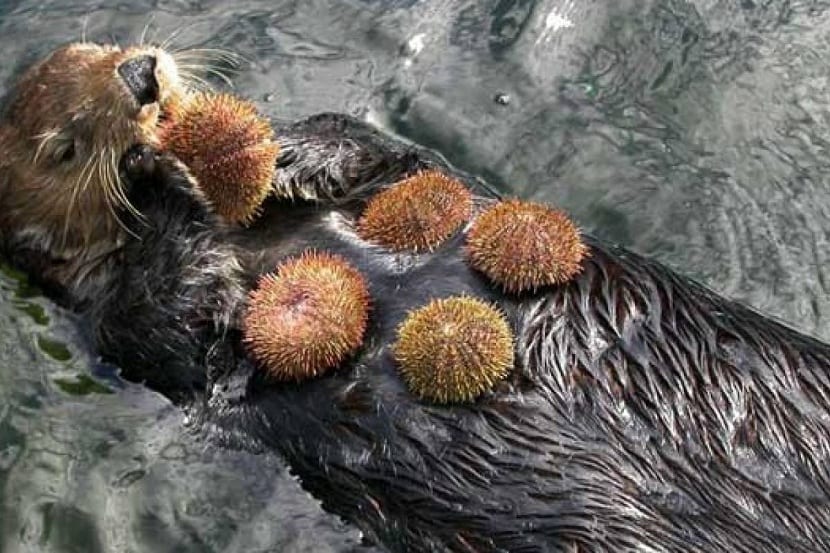
Due to its fast metabolism, the sea otter needs food very frequently. They need to ingest nutrients that cover between 25 and 40% of their body weight. They are carnivores and their main food is marine invertebrates such as mussels, snails, sea urchins and some small fish.
To eat these foods they need to open the shells or use stones and pieces of wood to help them. These actions require a bit more skill and for that they have their longest finger. As it cannot always eat all the food it finds, the sea otter has developed a system of adaptation to these situations to store its food and eat it later.
It is a pocket that they have made of their extended and loose skin on their thorax where you can store food that you will not eat at the moment and that it is found continuously while it is swimming or submerged. Once his pocket is full or hungry, he uses his fur to roll over, float on his back, and gorge himself on all the stored food.
Reproduction
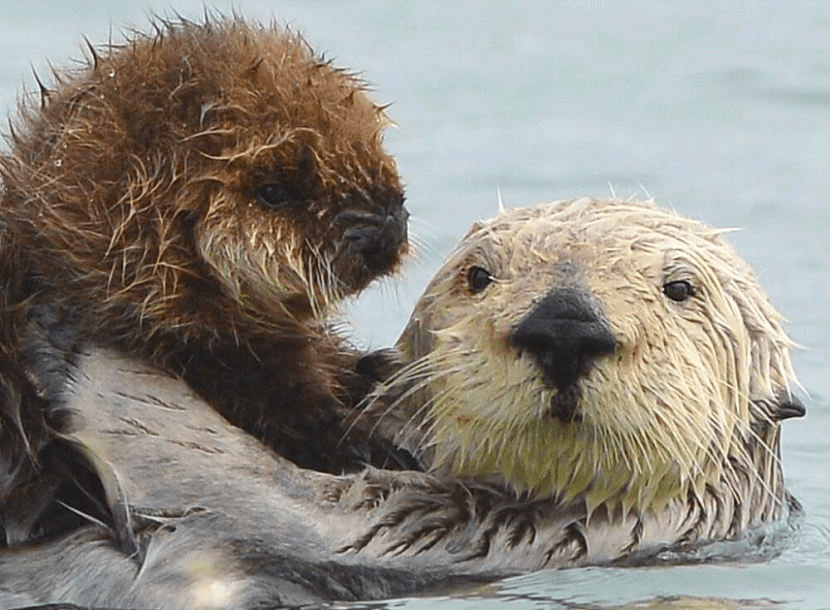
The sea otter has young throughout the year, although they are more frequent in the months of May and June when the temperatures are more pleasant and there is more abundance of food. The gestation period of the young usually lasts between 4 and 20 months. This wide difference is due to the fact that it has delayed implantation. This is that the female has the possibility of freezing the ovum that she has fertilized to let it grow when the environmental conditions are more favorable for its reproduction.
This is a pretty good survival mechanism in the face of adverse environmental conditions.
I hope that with this information you will get to know the sea otter better.